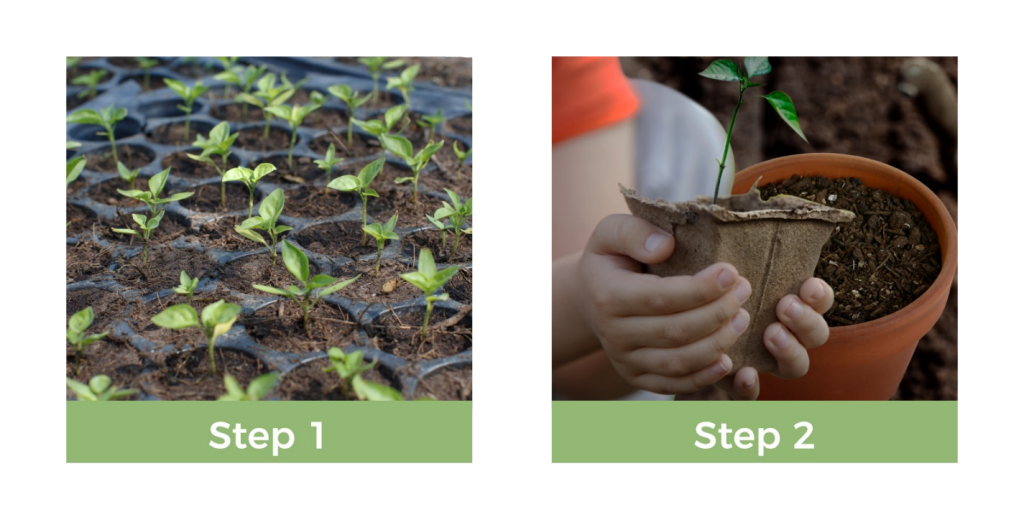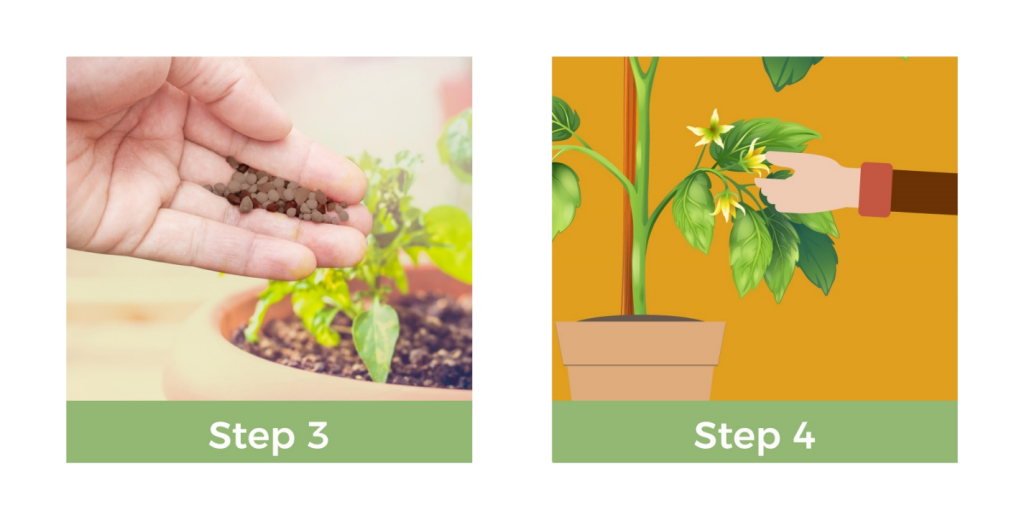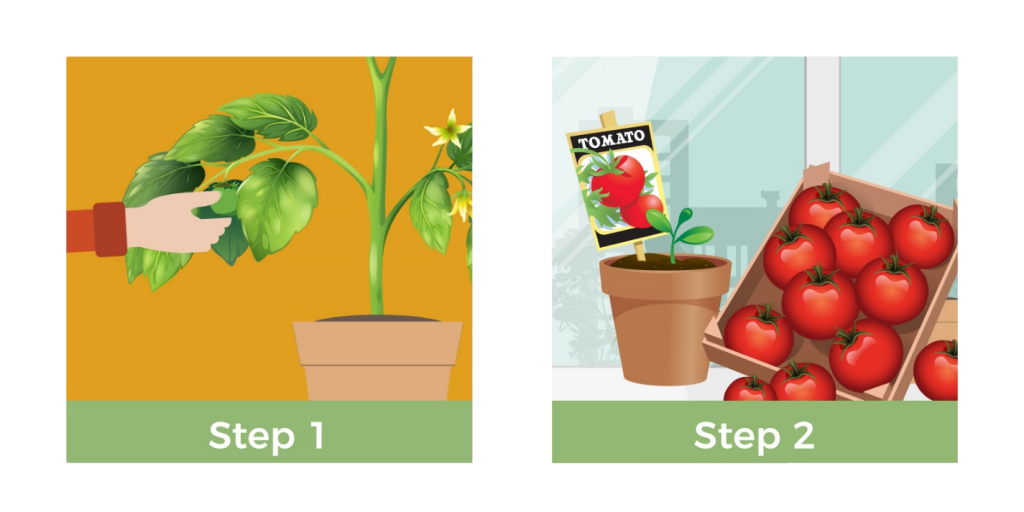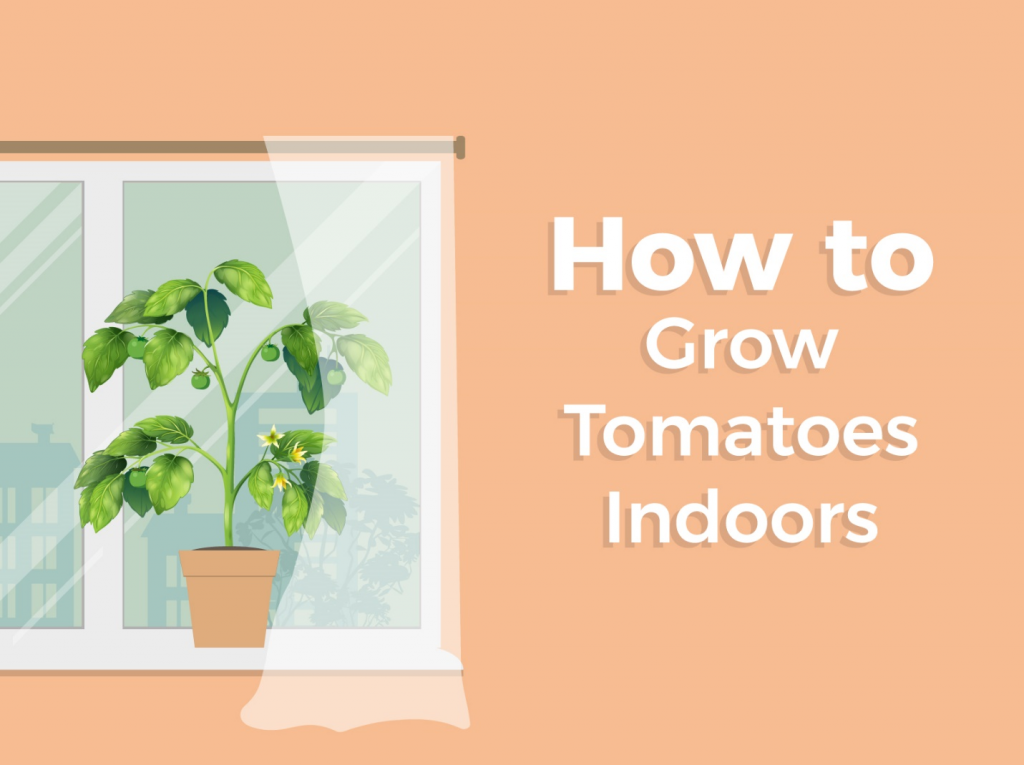
Growing season may be over, but winter conditions shouldn’t stop you from enjoying fresh homegrown tomatoes. Even with the temperature dropping outside, indoor climates are warm enough to support tomato plants this time of year. The right supplies and an ample amount of sunlight are all you need to produce a delicious supply that will last the entire season. Use this how-to guide to grow your own tomatoes indoors.
Setting Up
Because growing tomato plants indoors has several requirements, it’s important to plan ahead to make sure to have the proper setup. This means finding a place in your home that supports the growth of tomato plants, then ensuring the proper tools are on hand to help ensure a successful outcome.
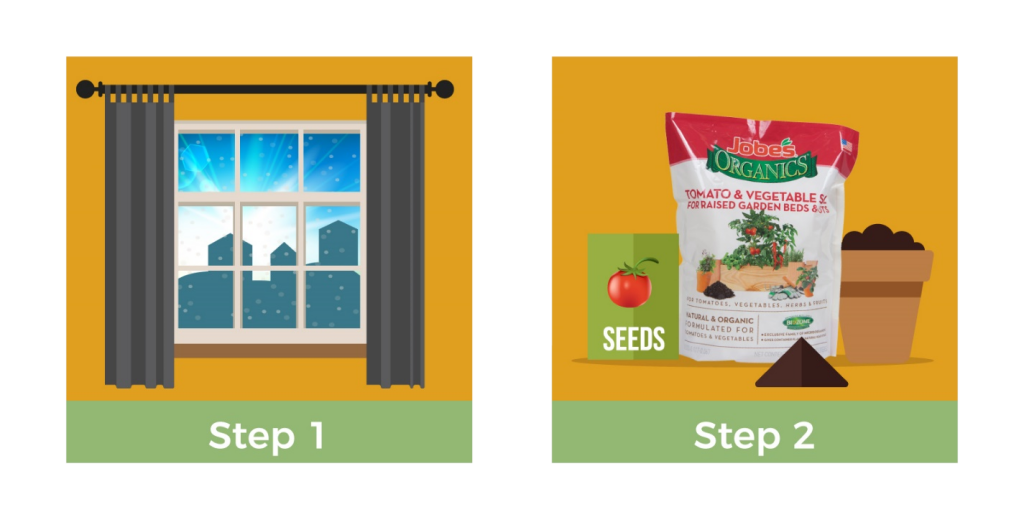
- Find the Perfect Place: Tomatoes won’t effectively grow indoors unless the conditions are like those of an outdoor garden. The plants need a good eight hours of sunlight per day and a surrounding temperature of around 70 degrees Fahrenheit or higher. Consider a spot on a window sill or near a screen door. If you’re worried your plant won’t get enough sunlight, special grow lights will do the trick.
- Purchase the Right Supplies: Not all tomatoes grow well indoors; be wary of this when you buy your seeds. Think smaller varieties – plum and cherry tomatoes are your best bet if you want them to ripen quickly. Vining plants (“indeterminates”) are ideal for the indoors, though they take up more space than bush plants (“determinates”). You also want to buy the following:
-
-
- Starting trays
- Starting mix
- Pots
- Potting mix
- Fertilizer
- Plant stakes
-
Planting and Tending
After you have everything you need, it’s time to plant your seeds. While the growing process may seem simple, it only works if you’re truly committed. Without the natural conditions of the outdoors, you must assist with germination and pollination, as well as watering and turning the plants.
- Plant Seeds for Germination: Before seeds enter full growth mode, they need to germinate. To initiate this process, plant seeds in a starting tray with starting mix. Place the tray in a warm place like on top of the refrigerator or on a heating pad, and water it each day to keep the seeds moist. Germination usually takes about five to 10 days – at this point, the plants will have sprouted.
- Move Seedlings into Pots: After seeds have sprouted and become seedlings, move them into one of the pots you bought. This ensures plenty of room for growth (one seedling per pot). Be careful when you do this, as you don’t want to break the roots. Surround the seedlings with potting mix, and move the pots to the sunny place you picked out earlier. Here, the tomato plants will grow to full size.
- Nourish the Plants: As the plants continue to grow, turn them once a day or so to make sure all sides are getting a good amount of sunlight. You will only need to water them when you notice the soil is dry. To give them the rest of the nutrients they need, lightly fertilize the plants every few weeks or according to the manufacturer’s instructions.
- Assist in Their Growth: Outdoors, bees and birds pollinate tomato plants, helping them develop fruit. But indoors, this isn’t the case, and your assistance is needed. Once flowers bloom, tap the stems lightly each day (a cotton swab also does the trick) to spread pollen. As the plants grow larger, provide them with the proper space they need. Add stakes to hold vines in place, and place in bigger pots as they outgrow current ones.
Harvesting
It usually takes indoor tomato plants around 60 to 80 days to produce fruit – about the same time as they do outdoors. With all the time and effort it takes to grow tomatoes (and how delicious they are when ripe), you’ll want to make sure you pick them at the right time. Don’t stop there, though; keep the cycle going all winter long!
- Harvest Tomatoes Before They’re Ripe: You may think it’s time to pick tomatoes once they’re red – after all, that’s when we usually buy them at the store. But you want to pick them when they’re still green, allowing them to fully ripen afterward. To pick a tomato, grab it near the stem and twist to snap it off.
- Keep the Cycle Going: Tomatoes plants typically produce fruit over an extended period of time. Don’t let your indoor tomato growing experiment end with a single harvest. Tend to the plants over the course of the winter, and you could end up with delicious tomatoes to last you the entire season.
Jobe’s Organic Products: Your Indoor Gardening Go-To
If winter conditions are too harsh to grow tomatoes in your garden, don’t fret. Indoor tomato growing is a great solution, and it only takes a trip to the store and a bit of routine upkeep to reach a full harvest. Nothing beats juicy homegrown tomatoes – get started this winter with the help of Jobe’s Organics® gardening products, and you’ll have plenty of them to go around.
